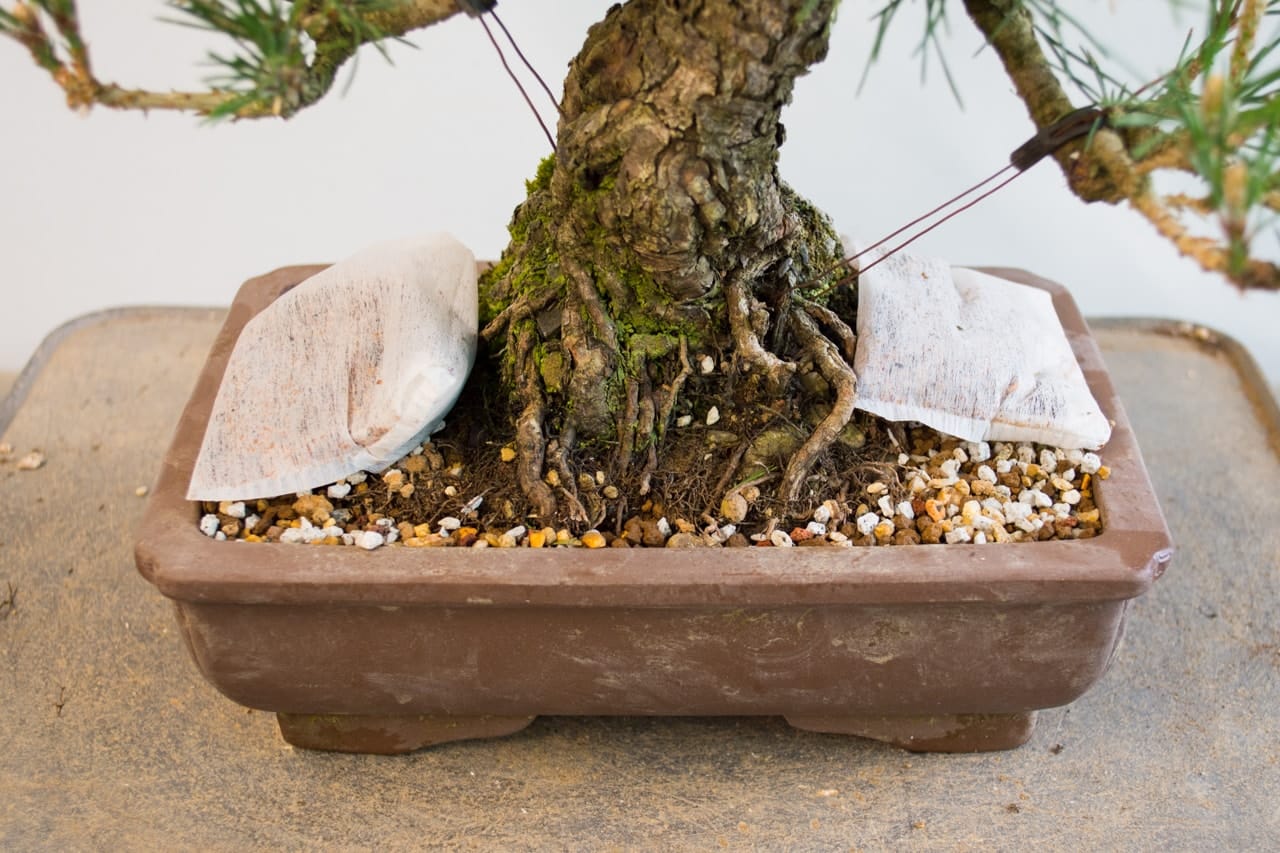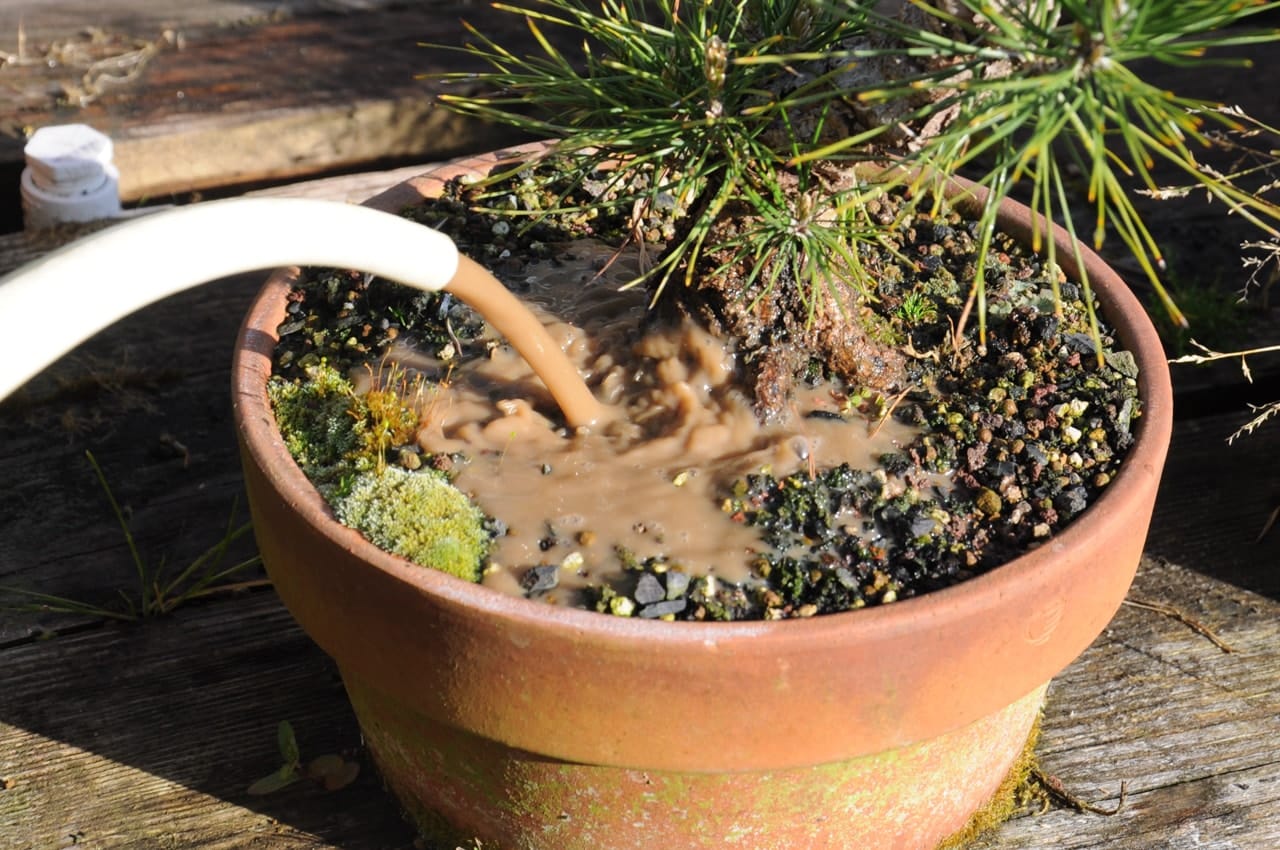Bonsai tree fertilizer is essential for healthy growth. It provides necessary nutrients to maintain vigor and beauty.
Bonsai trees, like all plants, require proper nutrition to thrive. Fertilizer supplies essential nutrients that may be lacking in the soil. Regular feeding ensures your bonsai remains healthy, strong, and vibrant. Different types of bonsai require specific fertilizers, so choose one suited to your tree.
Organic and inorganic options are available, each with unique benefits. Organic fertilizers release nutrients slowly, promoting steady growth. Inorganic fertilizers provide quick nutrient boosts. Always follow the recommended dosage to avoid over-fertilization, which can harm your bonsai. Proper fertilization, combined with adequate watering and pruning, ensures your bonsai remains a stunning focal point in your home or garden.

Credit: bonsaitonight.com
Importance Of Fertiliser
Bonsai trees need proper care to thrive. One essential aspect is fertilisation. Fertiliser gives bonsai trees the nutrients they need. This helps them grow strong and stay healthy. Without fertiliser, bonsai trees might not get the nutrients they need.
Nutrient Requirements
Bonsai trees need a mix of nutrients. These include nitrogen, phosphorus, and potassium. Below is a table showing their importance:
| Nutrient | Role |
|---|---|
| Nitrogen | Helps with leaf and stem growth. |
| Phosphorus | Supports root growth and flower production. |
| Potassium | Boosts overall plant health. |
Signs Of Deficiency
Bonsai trees show signs when they lack nutrients. Look for these symptoms:
- Yellow leaves indicate a lack of nitrogen.
- Poor root growth suggests a phosphorus deficiency.
- Weak overall health may mean low potassium.
Watch your bonsai tree closely. These signs can help you know when to fertilise.

Credit: bonsaitonight.com
Types Of Fertilisers
Choosing the right fertiliser is crucial for the health of your bonsai tree. There are two main types of fertilisers: organic and inorganic. Each has its own benefits and applications. Understanding these can help you make an informed decision for your bonsai care.
Organic Options
Organic fertilisers come from natural sources. They are often made from animal or plant waste. These fertilisers are rich in essential nutrients. They improve soil health and structure.
Some common organic options include:
- Compost: Decomposed organic matter that enriches the soil.
- Bone Meal: Crushed animal bones that provide phosphorus.
- Fish Emulsion: Liquid fertiliser made from fish waste.
- Manure: Animal waste that is high in nitrogen.
Organic fertilisers release nutrients slowly. This provides a steady supply of nutrients over time. They also encourage beneficial microbes in the soil.
Inorganic Choices
Inorganic fertilisers are synthetic. They are made from chemical compounds. These fertilisers provide nutrients quickly. They are easy to measure and apply.
Some popular inorganic options include:
- NPK Fertilisers: Contain nitrogen, phosphorus, and potassium in balanced amounts.
- Slow-Release Granules: Release nutrients over a specific period.
- Liquid Fertilisers: Quickly absorbed by the plant roots.
Inorganic fertilisers can be tailored to the specific needs of your bonsai. They are often less expensive and more readily available.
Both organic and inorganic fertilisers have their own advantages. The choice depends on your bonsai tree’s needs and your gardening preferences.
Choosing The Right Fertiliser
Choosing the right fertiliser for your bonsai tree is crucial. Fertiliser provides essential nutrients for growth. But not all fertilisers are the same. Some fertilisers suit specific tree species and seasonal needs.
Tree Species Considerations
Different bonsai species have unique nutrient requirements. Here is a quick guide:
- Evergreens: Need balanced fertilisers with equal N-P-K ratios.
- Deciduous: Prefer fertilisers with higher nitrogen content.
- Fruit-bearing: Need more phosphorus for blooming and fruiting.
Seasonal Needs
Bonsai trees have different nutrient needs in each season. Adjust your fertilisation accordingly:
| Season | Nutrient Needs |
|---|---|
| Spring | High nitrogen for growth |
| Summer | Balanced nutrients for strength |
| Autumn | Less nitrogen, more potassium for root health |
| Winter | Minimal fertilisation |
Application Techniques
Applying the right fertiliser to your bonsai tree is crucial for its health and growth. Understanding different application techniques can help you make the best choice for your tree.
Granular Vs. Liquid
Granular fertilisers come in small, solid pieces. You can sprinkle them on the soil. These fertilisers are slow-release, providing nutrients over time.
Liquid fertilisers are mixed with water. You pour them directly onto the soil. They deliver nutrients quickly, but need frequent application.
| Type | Application | Frequency |
|---|---|---|
| Granular | Sprinkled on soil | Every 4-6 weeks |
| Liquid | Mixed with water | Every 1-2 weeks |
Foliar Feeding
Foliar feeding involves spraying liquid fertiliser on the leaves. The leaves absorb the nutrients directly. This method is fast and effective.
To foliar feed, mix the fertiliser with water. Use a spray bottle to mist the leaves. Do this in the early morning or late afternoon. Avoid direct sunlight during application.
Foliar feeding helps with nutrient deficiencies. It’s especially useful for quick nutrient boosts.
- Mix liquid fertiliser with water.
- Fill a spray bottle.
- Mist the leaves evenly.
- Spray in early morning or late afternoon.
Using these techniques ensures your bonsai tree gets the nutrients it needs.
Frequency Of Fertilisation
The frequency of fertilisation is crucial for the health of your bonsai tree. Proper fertilisation ensures strong growth and vibrant foliage. Understanding the fertilisation schedule and its importance can make a significant difference.
Growth Phases
Bonsai trees have different nutrient needs during their growth phases. During the active growth phase, usually in spring and summer, they require more nutrients. In the dormant phase, typically in winter, they need fewer nutrients.
Here’s a quick breakdown:
- Active Growth Phase: Weekly fertilisation.
- Dormant Phase: Monthly or no fertilisation.
Annual Schedule
Creating an annual fertilisation schedule helps in maintaining a healthy bonsai tree. Consistency is key, but adjustments are necessary based on the tree’s needs.
| Season | Frequency | Type of Fertiliser |
|---|---|---|
| Spring | Weekly | Nitrogen-rich fertiliser |
| Summer | Weekly | Balanced fertiliser |
| Autumn | Bi-weekly | Low-nitrogen fertiliser |
| Winter | Monthly or none | No fertiliser |
Following a structured schedule ensures your bonsai tree thrives. Keep an eye on its health and adjust as needed.
Common Mistakes To Avoid
Caring for a bonsai tree requires attention to detail. Fertilising is crucial for healthy growth. But many make mistakes. Here are common errors to avoid.
Over-fertilisation Risks
Over-fertilisation can harm your bonsai tree. Excess nutrients can burn roots. This causes leaf drop and yellowing. It can also lead to stunted growth.
To avoid over-fertilisation, follow these tips:
- Use a balanced fertiliser
- Follow recommended application rates
- Fertilise during the growing season only
Under-fertilisation Issues
Under-fertilisation can also be a problem. Your bonsai tree may lack essential nutrients. This results in weak growth and pale leaves. The tree becomes more susceptible to diseases.
To prevent under-fertilisation, consider these steps:
- Fertilise regularly during the growing season
- Use a fertiliser designed for bonsai trees
- Monitor your tree’s health and adjust as needed
Avoiding these common mistakes ensures your bonsai tree thrives. Proper fertilisation is key to a healthy bonsai.
Diy Fertiliser Recipes
Creating your own fertiliser for your bonsai tree can be both fun and rewarding. DIY fertiliser recipes allow you to control the ingredients and ensure your bonsai gets the best nutrients. Let’s explore some easy and effective recipes using common household items.
Homemade Mixes
Homemade fertilisers are easy to make and cost-effective. Here are some simple mixes you can prepare at home:
- Eggshell Fertiliser: Crush eggshells into a fine powder. Sprinkle this around your bonsai soil. It provides calcium, which strengthens cell walls.
- Banana Peel Fertiliser: Cut banana peels into small pieces. Bury them in the soil around your bonsai. Bananas are rich in potassium, helping with overall plant health.
- Fish Tank Water: Use water from your fish tank to water your bonsai. It contains fish waste, which is rich in nitrogen.
Natural Ingredients
Using natural ingredients ensures your bonsai receives organic nutrients. Here are some natural ingredients to consider:
| Ingredient | Benefits |
|---|---|
| Compost | Compost provides a balanced mix of nutrients. |
| Seaweed Extract | Seaweed extract is high in trace minerals. |
| Coffee Grounds | Coffee grounds add nitrogen to the soil. |
Incorporating these ingredients into your fertiliser ensures a healthy bonsai. Remember to use these natural ingredients in moderation. Too much can harm your plant.

Credit: thebonsaisupply.com
Expert Tips For Healthy Growth
Bonsai trees are a unique and beautiful addition to any home. To keep them thriving, proper fertilisation is essential. Here are some expert tips for ensuring your bonsai tree enjoys healthy growth.
Monitoring Plant Health
Regularly check your bonsai tree for signs of health. Look for bright green leaves and sturdy branches. These are indicators of a healthy tree. If leaves turn yellow or brown, your plant might need attention.
Examine the soil moisture frequently. Bonsai trees prefer slightly moist soil. Use a moisture meter or your finger to check this. Overwatering or underwatering can harm your bonsai.
Adjusting Fertiliser Regimen
Adjust the fertiliser regimen based on your bonsai’s needs. In spring and summer, bonsai trees grow actively. They require more nutrients during these seasons.
Use a balanced fertiliser with equal parts nitrogen, phosphorus, and potassium. Apply the fertiliser every two weeks during the growing season.
| Season | Fertiliser Frequency | Fertiliser Type |
|---|---|---|
| Spring | Every two weeks | Balanced fertiliser |
| Summer | Every two weeks | Balanced fertiliser |
| Autumn | Once a month | Low nitrogen fertiliser |
| Winter | Every six weeks | No fertiliser |
In autumn, reduce fertiliser to once a month. Use a low nitrogen fertiliser. This helps prepare the tree for dormancy. In winter, fertilise every six weeks or not at all.
Always water the bonsai before applying fertiliser. This prevents root burn and helps in nutrient absorption.
By following these tips, your bonsai tree will flourish with vibrant health and beauty.
Conclusion
Caring for your bonsai tree involves proper fertilization. Use the right bonsai tree fertilizer for healthy growth. Choose organic options for the best results. Regular feeding ensures your bonsai thrives and remains vibrant. Remember, a well-fed bonsai is a happy bonsai.
Keep your miniature masterpiece flourishing with these fertilizing tips.

